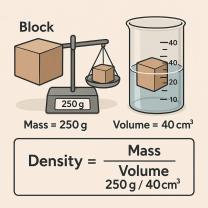How to solve linear equations in Go Math Grade 8?
Solving linear equations in Grade 8 Go Math involves applying various techniques to isolate the variable and find its value. Linear equations have the form "ax + b = c," where "a," "b," and "c" are constants, and "x" is the variable we want to solve for. Here are some techniques and examples for solving linear equations in Grade 8:1. Addition and Subtraction Properties:
The addition and subtraction properties of equality allow you to add or subtract the same value to both sides of the equation without changing the balance. This helps isolate the variable on one side of the equation.
Example 1:
2x + 5 = 11
Step 1: Subtract 5 from both sides to move the constant term to the right side of the equation:
2x = 11 - 5
2x = 6
Step 2: Divide both sides by 2 to solve for "x":
x = 6 ÷ 2
x = 3
2. Multiplication and Division Properties:
The multiplication and division properties of equality allow you to multiply or divide both sides of the equation by the same value without changing the solution.
Example 2:
4(x - 2) = 20
Step 1: Use the distributive property to remove the parentheses:
4x - 8 = 20
Step 2: Add 8 to both sides to move the constant term to the right side of the equation:
4x = 20 + 8
4x = 28
Step 3: Divide both sides by 4 to solve for "x":
x = 28 ÷ 4
x = 7
3. Fractional Coefficients:
When dealing with equations that have fractional coefficients, you can eliminate the fractions by multiplying both sides of the equation by the least common multiple (LCM) of the denominators.
Example 3:
(1/3)x - 2 = 4
Step 1: Add 2 to both sides to move the constant term to the right side of the equation:
(1/3)x = 4 + 2
(1/3)x = 6
Step 2: Multiply both sides by 3 to eliminate the fraction:
3 * (1/3)x = 3 * 6
x = 18
It's essential to check your solutions by substituting the found value of "x" back into the original equation to ensure it satisfies the equation.
Remember to practice with various linear equations to develop your problem-solving skills. Additionally, utilize the resources provided by Go Math Grade 8, such as examples and practice exercises, to reinforce your understanding of solving linear equations.












